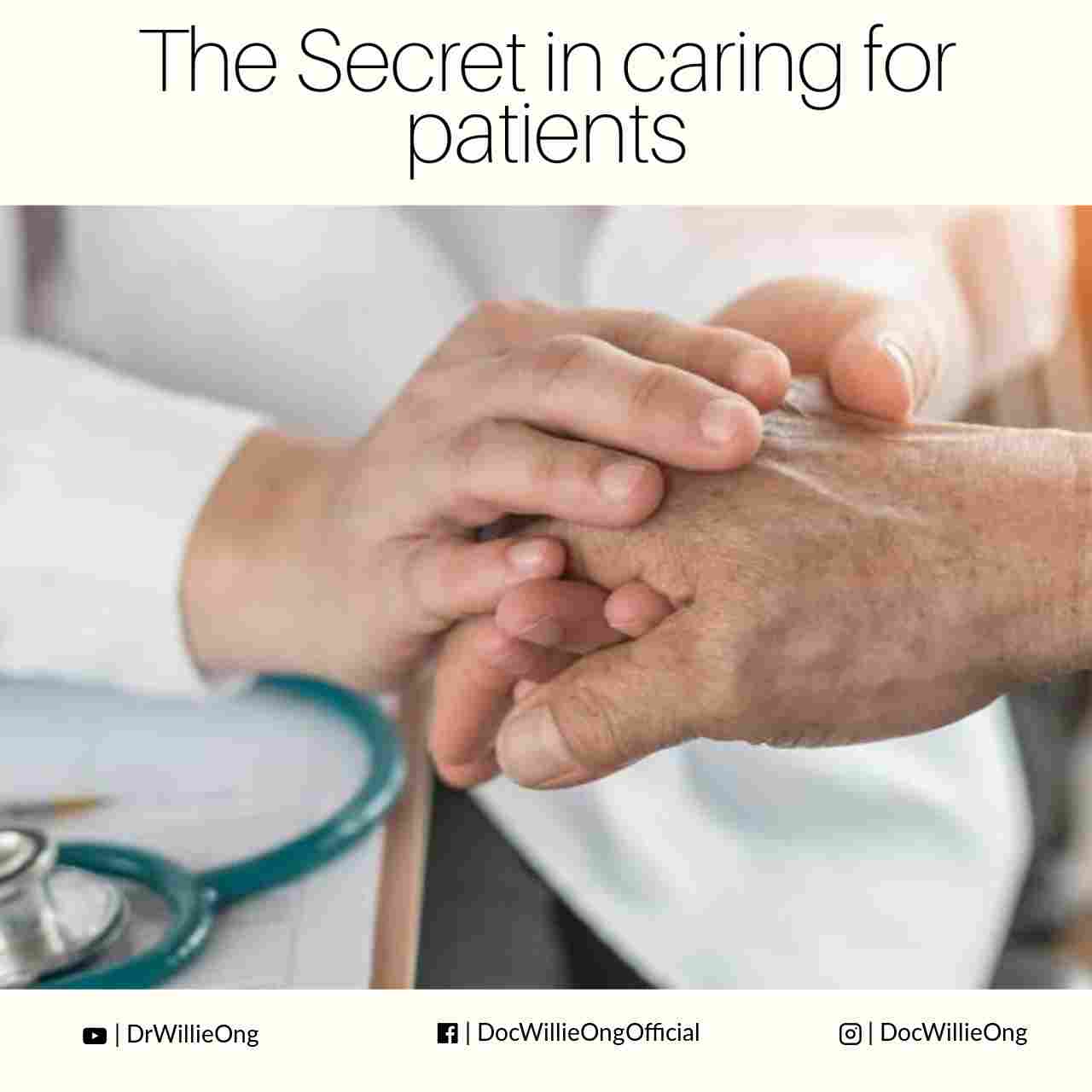By Dr. Willie Ong
I received a strange email from a lady. She asked me if there was an alleged collusion between her doctor and the hospital. Where she was confined.
And another reader wrote about the horrible costs of being admitted in a hospital.
In our charity missions, we’ve heard poor patients complaining to expensive medicine prescribe by their doctors. Knowing that they had no money. Too many complaints from patients.
Adapting to the Filipino Patient
Being a doctor is not an easy thing. To our dear readers, just think: It’s somehow like the transformation of a person who has suddenly been given god-like powers. The power to heal, to comfort and to affect another life so intimately.
I understand the struggles of young doctors as they practice their craft. However, you quickly learn in the Philippines that optimal care is usually not applicable because of financial reasons.
Doctors just can’t order CT Scans, lab tests left and right, then throw the textbook’s eight drug armamentarium at the hapless and helpless patient. Unless we ask the patient first if he or she can afford these drugs, I don’t think we should prescribe them. Hence, I urge young doctors to learn about cheaper drug options and affordable lab centers.
Words can Hurt or Heal
For charity patients, I believe we shouldn’t tell a sick child’s father that his son needs this test or else. I have seen fathers steal, cry and go crazy looking for money to pay for an MRI scan. And after the scan, what next? Most likely, it won’t cure the patient anyway. It’s just one test. As doctors, we should find out how much the patient can afford and work from there.
A better option would be to say, “This laboratory test may help us decide what disease your child is suffering from. But if you can’t afford it, we will just rely on other parameters and still give him the medicines he need.”
Moreover, young practitioners should learn to adapt what he reads from textbooks and just choose the fewest number of drugs that will cure the patient. If the drug is worth more than 40 pesos, think twice before prescribing. If the drug is worth more than 100 pesos, think very hard if there is really and honestly no cheaper drugs available.
A few years back, I also struggled to find my own path. Luckily, I learned my most important lesson as a doctor. I didn’t find it in a scientific journal, but in a special patient named Alma.
Your Patients are Your Teachers
I met Alma at a charity ward during my cardiology training in PGH. It’s easy to remember her since she had a heart-rending story to tell. In 1990, bolo-wielding terrorists massacred 23 people in Zamboanga, including Alma’s husband.
As if such a tragedy wasn’t enough, she later developed difficulty of breathing and was rushed to a nearby hospital. Her doctors discovered that she had a heart problem that needed expensive surgery in Manila. And that is how my life got intertwined with Alma’s.
Alma somehow endured her complicated surgery, not complaining a bit even when doctors stuck three thumb-sized tubes into her chest. One day, I got an urgent message to see Charity Bed 4 patient, Alma’s bed. She developed fast heart beating which almost cut her life. But fortunately it was controlled by medicines.
I visited her often. And there, in the midst of the pain and suffering around us, she related to me her tragic story. She was all alone in the world. As the days passed, we found ourselves talking less about her illness and more about her pains.
Somehow, Alma’s low point was also a struggling time for me. Things were getting too routine and too taxing in that hospital of misery. There were times I would question what I was doing there in the first place.
Months later, I had to say goodbye to Alma and do some training abroad. When I broke the news, Alma became quiet. It was just another debacle in the miserable life of Alma.
Then, with a crackling voice, she uttered the words I can never forget. “Doc, when I get well, please promise me one thing. Be my doctor for life. I don’t care if I have to borrow money to pay you.”
I held her hand, and looked at her. And I release a deep sigh and said. “Don’t worry Ma’am. I promise I take care of you.” She was teary-eyed as I left. I didn’t look back.
Suddenly, the sweltering afternoon sun seemed less oppressive. Alma helped me understand what exactly is the so-called “patient-doctor relationship.” It has nothing to do with exchanging fees or counting favors. It’s about imperfect people trying to extend some compassion from one heart to another. For me, it’s about people believing in you when you aren’t so sure of yourself.
And whenever I am feeling low, Alma’s face resurfaces to my mind’s eye. I can still hear her say: Be my doctor for life.
Because of Alma, I have tried to give each patient as much time as I can, listening not only to their complaints but also to their dreams. Unless we doctors learn to put ourselves in our patient’s shoes.
And I have finally understood the words of the great Francis Peabody when he described the sacred patient-doctor relationship in 1927: “For the secret of the care of the patient is in caring for the patient.”



